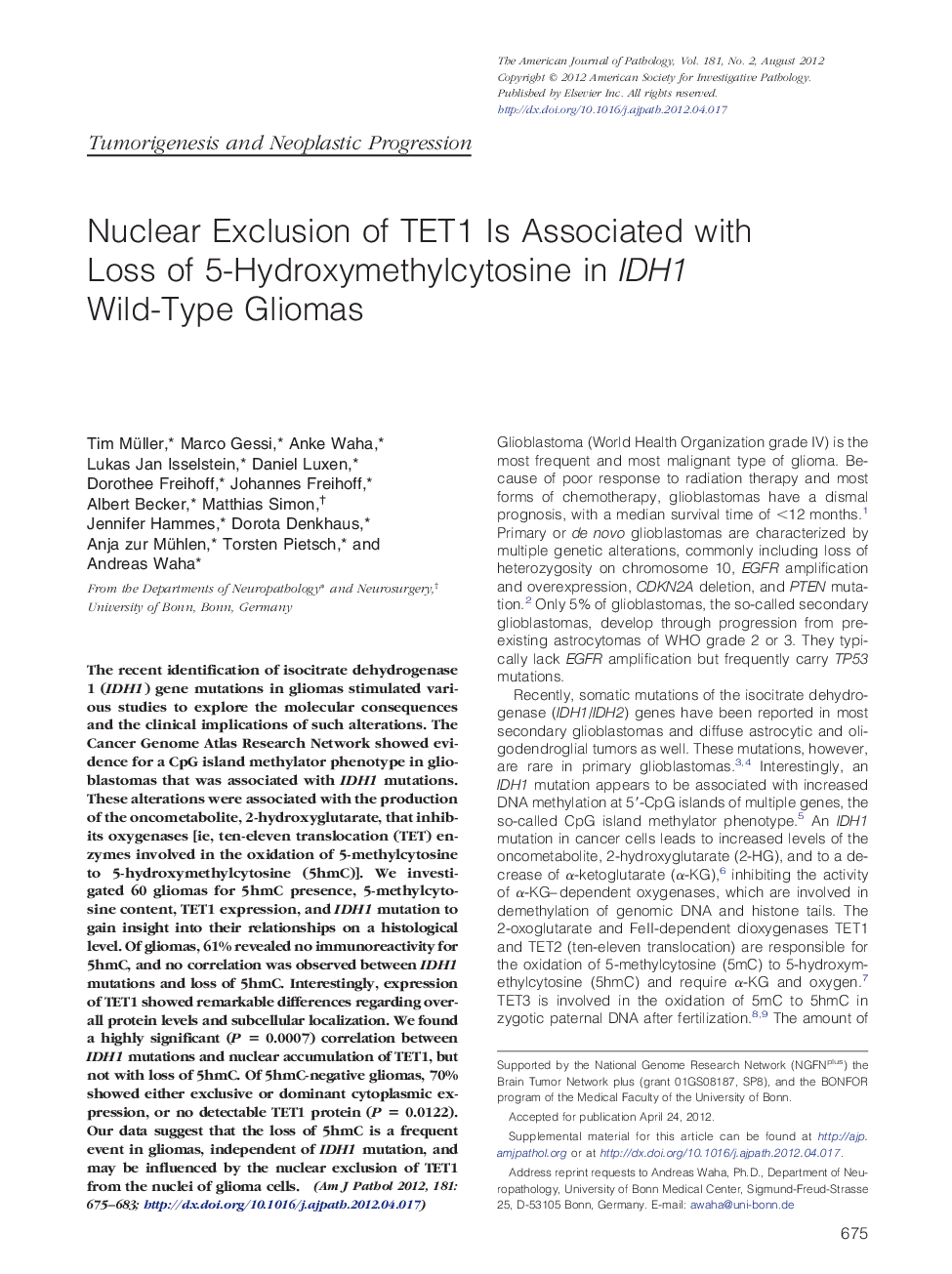| Article ID | Journal | Published Year | Pages | File Type |
|---|---|---|---|---|
| 5933451 | The American Journal of Pathology | 2012 | 9 Pages |
The recent identification of isocitrate dehydrogenase 1 (IDH1) gene mutations in gliomas stimulated various studies to explore the molecular consequences and the clinical implications of such alterations. The Cancer Genome Atlas Research Network showed evidence for a CpG island methylator phenotype in glioblastomas that was associated with IDH1 mutations. These alterations were associated with the production of the oncometabolite, 2-hydroxyglutarate, that inhibits oxygenases [ie, ten-eleven translocation (TET) enzymes involved in the oxidation of 5-methylcytosine to 5-hydroxymethylcytosine (5hmC)]. We investigated 60 gliomas for 5hmC presence, 5-methylcytosine content, TET1 expression, and IDH1 mutation to gain insight into their relationships on a histological level. Of gliomas, 61% revealed no immunoreactivity for 5hmC, and no correlation was observed between IDH1 mutations and loss of 5hmC. Interestingly, expression of TET1 showed remarkable differences regarding overall protein levels and subcellular localization. We found a highly significant (P = 0.0007) correlation between IDH1 mutations and nuclear accumulation of TET1, but not with loss of 5hmC. Of 5hmC-negative gliomas, 70% showed either exclusive or dominant cytoplasmic expression, or no detectable TET1 protein (P = 0.0122). Our data suggest that the loss of 5hmC is a frequent event in gliomas, independent of IDH1 mutation, and may be influenced by the nuclear exclusion of TET1 from the nuclei of glioma cells.
